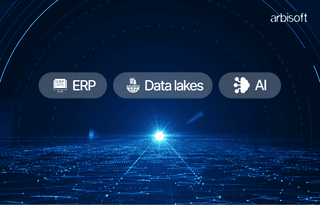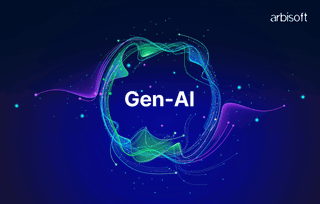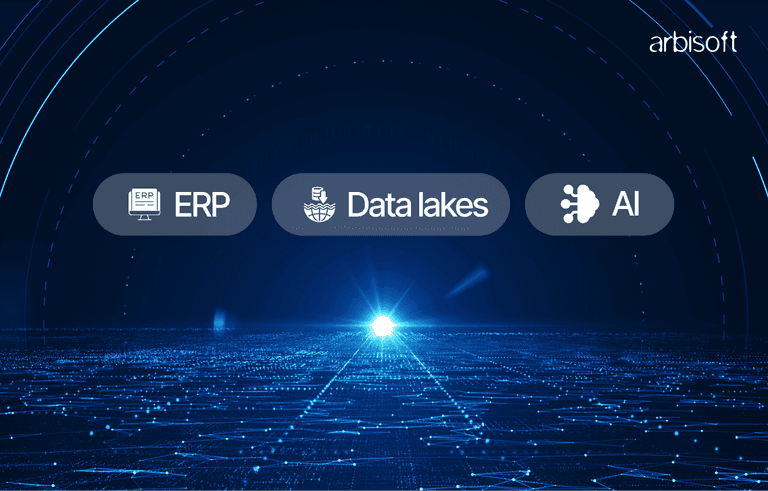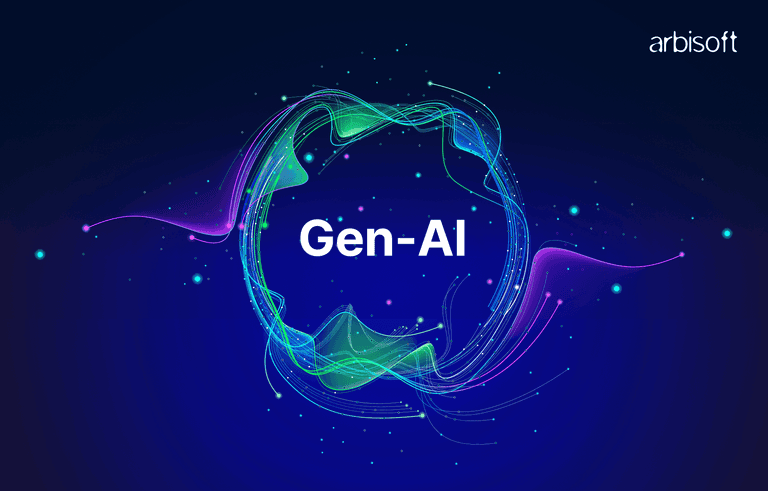We put excellence, value and quality above all - and it shows




A Technology Partnership That Goes Beyond Code

“Arbisoft has been my most trusted technology partner for now over 15 years. Arbisoft has very unique methods of recruiting and training, and the results demonstrate that. They have great teams, great positive attitudes and great communication.”
Using AI for data analysis: The Definitive Guide
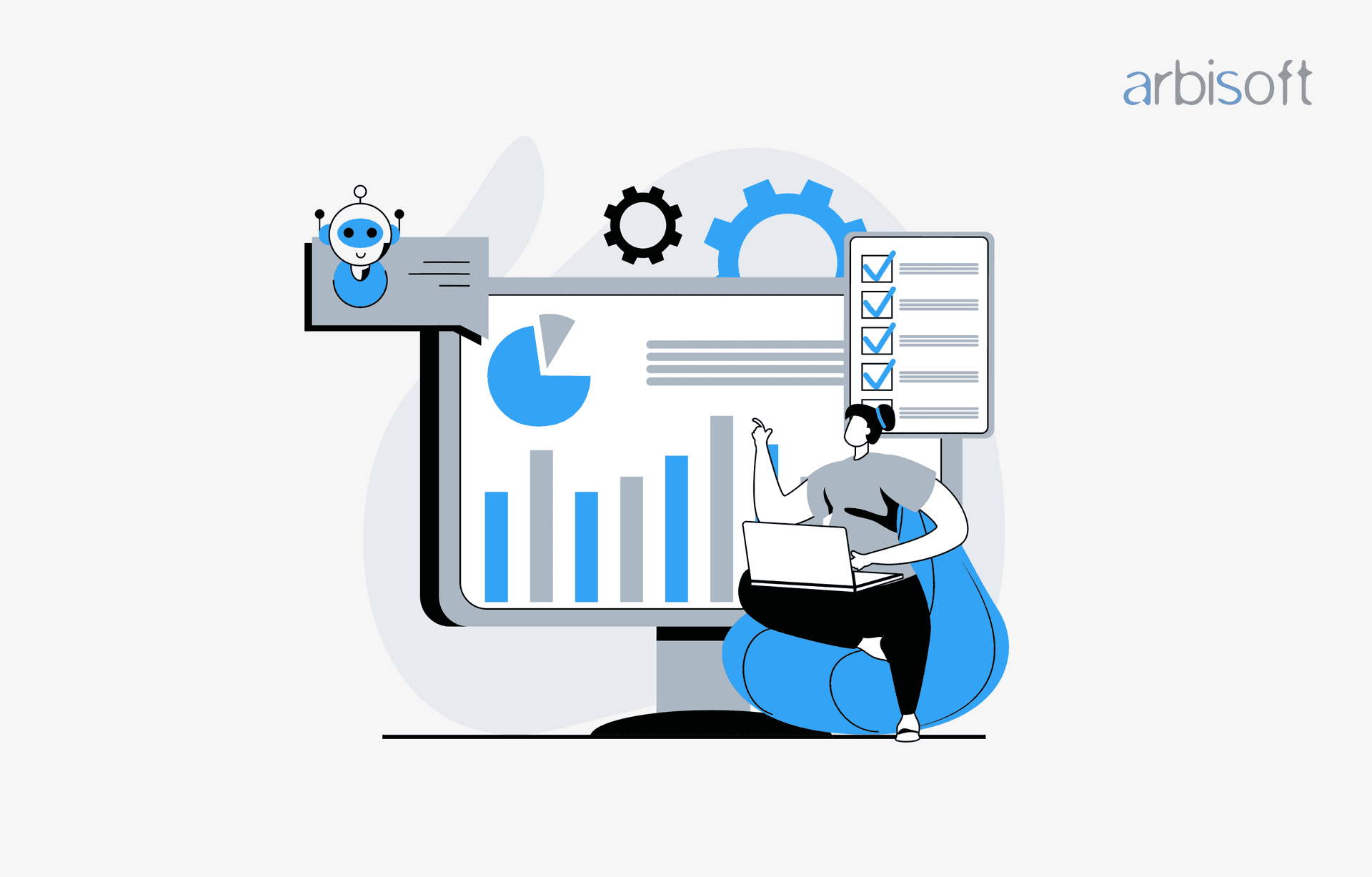
Did you know that the global data sphere is expected to reach 175 zettabytes (1 zettabyte = 1 trillion gigabytes) by 2025? Making sense of this much data can be overwhelming, but Artificial Intelligence (AI) has made it easier than ever to analyze and understand complex data sets. Also, according to a report by McKinsey, companies that leverage AI for data analysis can boost their profitability by up to 15%.
In this blog, we will go through how AI transforms data analysis, its benefits, and practical applications across various industries. Let's dive in!
What is AI in Data Analysis?
Artificial Intelligence (AI) in data analysis involves using machine learning algorithms and models to process and interpret data. AI can handle enormous datasets, identify patterns, and make predictions faster and more accurately than traditional methods, marking a shift from big data to smart data.
How to Implement AI in Data Analysis
Step 1: Define Your Objectives
Identify the specific problems you want to solve or the goals you want to achieve with AI. This clarity will guide your AI strategy and implementation.
Step 2: Collect and Prepare Data
Gather relevant data from various sources and ensure it is clean and structured. Businesses can utilize web scraping services for efficient data extraction as data quality is key for accurate AI analysis.
Step 3: Choose the Right AI Tools
Select AI tools and platforms that suit your needs. Consider factors like ease of use, scalability, and support when choosing a tool.
Step 4: Train Your AI Models
Use machine learning algorithms to train your AI models on your dataset. This involves feeding the data into the model and allowing it to learn and make predictions.
Step 5: Evaluate and Refine
Test the AI models to ensure they provide accurate and reliable insights. Continuously refine the models by feeding them new data and adjusting parameters as needed.
Step 6: Deploy and Monitor
Deploy the AI models into your business processes and monitor their performance. Make adjustments as necessary to maintain accuracy and relevance.
Take the First Step Towards AI Success
Everything You Need to Get Started

Everything You Need to Get Started
Download our AI implementation tips now and get started on transforming your business!

Why Use AI for Data Analysis?
Speed and Efficiency
AI can quickly analyze large volumes of data, providing real-time insights. This speed allows businesses to make faster decisions and stay ahead of the competition. According to a report by Accenture, AI can improve efficiency by up to 40%, helping businesses respond swiftly to market changes and customer needs.
Accuracy
AI reduces human errors in data analysis. Machine learning models can continuously improve as they process more data, leading to more accurate predictions and insights.
Scalability
AI systems can easily scale to handle growing amounts of data. Gartner predicts that by 2025, 60% of existing models built on traditional data will be replaced by context-driven analytics and AI models, and 75% of organizations will adopt AI-driven scalable solutions to enhance data management and analytics capabilities.
Cost-Effectiveness
Implementing AI for data analysis can be cost-effective in the long run. According to Deloitte, businesses using AI can reduce operational costs by up to 22%. This cost reduction comes from automating repetitive tasks, optimizing resource allocation, and minimizing errors.
Predictive Capabilities
AI’s ability to forecast trends and predict future outcomes is a game-changer for businesses, bridging the gap between data analytics vs. business intelligence. Predictive analytics powered by AI can help companies anticipate customer behavior, market trends, and potential risks. According to a survey by PwC, 72% of business executives believe that AI will be crucial in making accurate predictions that drive business growth.
Real-Time Processing
AI enables real-time data collection and data processing, which is critical for industries that require instant insights, such as finance and healthcare. For example, in the financial sector, AI can analyze stock market data in real time to make quick trading decisions. AI can process patient data on the spot in healthcare, aiding in timely diagnosis and treatment.
Looking to harness the power of AI for your data analysis needs? Check out Arbisoft's AI and data science services to see how we can help you make sense of your data and drive your business forward.
Applications of AI in Data Analysis
1. Transportation
AI is transforming transportation by optimizing routes, reducing fuel consumption, and improving safety. For instance, AI systems in autonomous vehicles analyze traffic patterns and make real-time decisions to navigate roads safely. AI also helps in predictive maintenance for fleets, reducing downtime and costs.
2. Healthcare
AI is revolutionizing healthcare by predicting disease outbreaks, recommending personalized treatments, and improving diagnostic accuracy. By analyzing large amounts of patient data, AI can detect early signs of diseases like diabetes and heart conditions.
3. Finance
In finance, AI helps detect fraudulent transactions, assess credit risks, and offer personalized financial advice. According to McKinsey & Company, AI can reduce banking operational costs by 20-25% over the next decade.
4. Energy
AI helps manage energy consumption and improve efficiency. It predicts energy demand, optimizes the operation of power grids and integrates renewable energy sources. AI systems like those from General Electric monitor and analyze data from power plants to enhance performance and predict failures.
5. Marketing
AI improves marketing by optimizing campaigns, predicting customer churn, and enhancing targeting. The Boston Consulting Group reports that businesses using AI for marketing see up to a 20% increase in sales and a 30% reduction in marketing costs. AI helps create personalized marketing messages, segment customers, and provide real-time personalization.
6. Retail
Retailers use AI to understand consumer behavior, manage inventory, and personalize shopping experiences. AI-driven recommendation engines have significantly increased sales for companies like Amazon and Netflix by predicting what customers will like. Additionally, AI helps with dynamic pricing and customer service through chatbots.
7. Agriculture
AI in agriculture optimizes crop yields, monitors soil health, and manages resources efficiently. AI-powered systems analyze data from sensors and drones to provide farmers with insights on the best times to plant, irrigate, and harvest crops. This leads to increased productivity and reduced environmental impact.
8. Manufacturing
AI predicts equipment failures, optimizes production schedules, and improves supply chain management. This leads to less downtime, lower costs, and higher productivity. AI-powered predictive maintenance tools analyze machine data to foresee issues and schedule timely maintenance. AI also enhances quality control and process optimization.
9. Education
AI personalizes learning experiences by analyzing student data to tailor educational content and identify areas where students need help. AI tutors and adaptive learning platforms provide customized feedback and support, improving learning outcomes. AI also assists in automating administrative tasks, allowing educators to focus more on teaching.
Challenges of Using AI in Data Analysis
- Data Privacy and Security: Handling sensitive data requires compliance with regulations like GDPR and CCPA, employing advanced encryption techniques, and potentially using anonymization and pseudonymization to enhance privacy.
- High Initial Costs: Implementing AI solutions can be costly, particularly for SMEs. These costs include technology acquisition, integration, and maintenance, but the long-term benefits often outweigh the initial investment.
- Need for Expertise: AI development and management require specialized skills in machine learning, data science, and software engineering. Businesses may need to invest in training or hiring experts, and ongoing education is crucial due to the rapid evolution of AI technologies.
- Data Quality and Integration: AI systems rely on high-quality data. Ensuring data accuracy and effective integration from various sources is essential to avoid inaccurate analysis and misleading insights.
- Algorithm Bias and Fairness: AI algorithms can perpetuate biases in training data, leading to unfair outcomes. Ensuring algorithmic fairness involves rigorous testing, validation, and continuous monitoring to mitigate bias.
- Scalability Issues: Scaling AI systems to handle increasing data volumes can be challenging. Efficient scalability may require advanced hardware, software optimization, and cloud-based solutions.
- Interpretability and Transparency: Complex AI models, like deep learning, can be difficult to interpret. Developing interpretable models and providing clear explanations of AI-driven decisions are necessary for transparency and stakeholder trust.
The Future of AI in Data Analysis
The use of AI in data analysis is expected to grow exponentially. According to Gartner, by 2025, AI will be integral to nearly every aspect of business operations. Innovations in AI, such as quantum computing and advanced machine learning models, will further enhance its capabilities and applications.
Lastly
AI is revolutionizing data analysis by making it faster, more accurate, and scalable. Its applications across various industries highlight its potential to drive significant business improvements. By understanding and implementing AI in data analysis, businesses can discover new opportunities, optimize operations, and stay competitive in an increasingly data-driven world. The future is here—don't get left behind!









